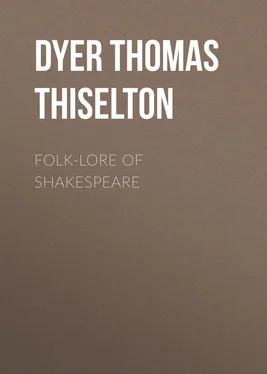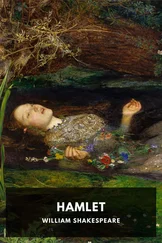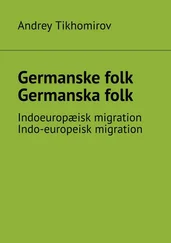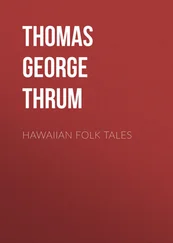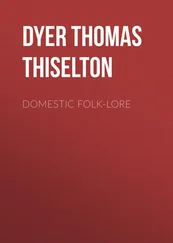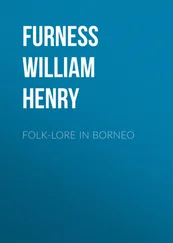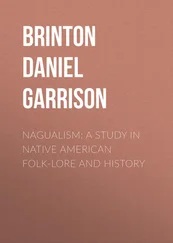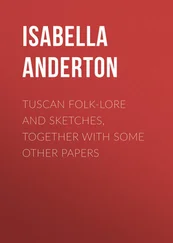Thomas Dyer - Folk-lore of Shakespeare
Здесь есть возможность читать онлайн «Thomas Dyer - Folk-lore of Shakespeare» — ознакомительный отрывок электронной книги совершенно бесплатно, а после прочтения отрывка купить полную версию. В некоторых случаях можно слушать аудио, скачать через торрент в формате fb2 и присутствует краткое содержание. Жанр: foreign_antique, foreign_prose, на английском языке. Описание произведения, (предисловие) а так же отзывы посетителей доступны на портале библиотеки ЛибКат.
- Название:Folk-lore of Shakespeare
- Автор:
- Жанр:
- Год:неизвестен
- ISBN:нет данных
- Рейтинг книги:4 / 5. Голосов: 1
-
Избранное:Добавить в избранное
- Отзывы:
-
Ваша оценка:
- 80
- 1
- 2
- 3
- 4
- 5
Folk-lore of Shakespeare: краткое содержание, описание и аннотация
Предлагаем к чтению аннотацию, описание, краткое содержание или предисловие (зависит от того, что написал сам автор книги «Folk-lore of Shakespeare»). Если вы не нашли необходимую информацию о книге — напишите в комментариях, мы постараемся отыскать её.
Folk-lore of Shakespeare — читать онлайн ознакомительный отрывок
Ниже представлен текст книги, разбитый по страницам. Система сохранения места последней прочитанной страницы, позволяет с удобством читать онлайн бесплатно книгу «Folk-lore of Shakespeare», без необходимости каждый раз заново искать на чём Вы остановились. Поставьте закладку, и сможете в любой момент перейти на страницу, на которой закончили чтение.
Интервал:
Закладка:
“I am a fayrie, and to make you know,
To be a fayrie what it doth import,
We cannot dye, how old so e’er we grow.
Of paines and harmes of ev’rie other sort
We taste, onelie no death we nature ow.”
An important feature of the fairy race was their power of vanishing at will, and of assuming various forms. In “A Midsummer-Night’s Dream” Oberon says:
“I am invisible,
And I will overhear their conference.”
Puck relates how he was in the habit of taking all kinds of outlandish forms; and in the “Tempest,” Shakespeare has bequeathed to us a graphic account of Ariel’s eccentricities. “Besides,” says Mr. Spalding, 23 23 “Elizabethan Demonology,” p. 50.
“appearing in his natural shape, and dividing into flames, and behaving in such a manner as to cause young Ferdinand to leap into the sea, crying, ‘Hell is empty, and all the devils are here!’ he assumes the forms of a water nymph (i. 2), a harpy (iii. 3), and also the Goddess Ceres (iv. 1), while the strange shapes, masquers, and even the hounds that hunt and worry the would-be king and viceroys of the island, are Ariel’s ‘meaner fellows.’” Poor Caliban complains of Prospero’s spirits (ii. 2):
“For every trifle are they set upon me;
Sometimes like apes, that mow and chatter at me,
And after bite me: then like hedgehogs which
Lie tumbling in my bare-foot way, and mount
Their pricks at my footfall; sometime am I
All wound with adders, who, with cloven tongues
Do hiss me into madness.”
That fairies are sometimes exceedingly diminutive is fully shown by Shakespeare, who gives several instances of this peculiarity. Thus Queen Mab, in “Romeo and Juliet,” to which passage we have already had occasion to allude (i. 4), is said to come
“In shape no bigger than an agate stone
On the fore-finger of an alderman.” 24 24 Agate was used metaphorically for a very diminutive person, in allusion to the small figures cut in agate for rings. In “2 Henry IV.” (i. 2), Falstaff says: “I was never manned with an agate till now; but I will inset you neither in gold nor silver, but in vile apparel, and send you back again to your master, for a jewel.” In “Much Ado About Nothing” (iii. 1) Hero speaks of a man as being “low, an agate very vilely cut.”
And Puck tells us, in “A Midsummer-Night’s Dream” (ii. 1), that when Oberon and Titania meet,
“they do square, that all their elves, for fear,
Creep into acorn cups, and hide them there.”
Further on (ii. 3) the duties imposed by Titania upon her train point to their tiny character:
“Come, now a roundel and a fairy song;
Then, for the third part of a minute, hence;
Some to kill cankers in the musk-rose buds,
Some war with rere-mice for their leathern wings,
To make my small elves coats.”
And when enamoured of Bottom, she directs her elves that they should —
“Hop in his walks and gambol in his eyes;
Feed him with apricocks and dewberries,
With purple grapes, green figs, and mulberries;
The honey bags steal from the humble-bees,
And for night tapers crop their waxen thighs
And light them at the fiery glow-worm’s eyes,
To have my love to bed, and to arise;
And pluck the wings from painted butterflies
To fan the moonbeams from his sleeping eyes.”
We may compare, too, Ariel’s well-known song in “The Tempest” (v. 1):
“Where the bee sucks, there suck I:
In a cowslip’s bell I lie;
There I couch when owls do cry,
On the bat’s back I do fly
After summer merrily,
Merrily, merrily shall I live now
Under the blossom that hangs on the bough.”
Again, from the following passage in “The Merry Wives of Windsor” (iv. 4) where Mrs. Page, after conferring with her husband, suggests that —
“Nan Page my daughter, and my little son,
And three or four more of their growth, we’ll dress
Like urchins, ouphes, and fairies, green and white,
With rounds of waxen tapers on their heads,
And rattles in their hands”
it is evident that in Shakespeare’s day fairies were supposed to be of the size of children. The notion of their diminutiveness, too, it appears was not confined to this country, 25 25 See Grimm’s “Deutsche Mythologie.”
but existed in Denmark, 26 26 Thoms’s “Three Notelets on Shakespeare,” 1865, pp. 38, 39.
for in the ballad of “Eline of Villenskov” we read:
“Out then spake the smallest Trold;
No bigger than an ant; —
Oh! here is come a Christian man,
His schemes I’ll sure prevent.”
Again, various stories are current in Germany descriptive of the fairy dwarfs; one of the most noted being that relating to Elberich, who aided the Emperor Otnit to gain the daughter of the Paynim Soldan of Syria. 27 27 See Keightley’s “Fairy Mythology,” 1878, p. 208.
The haunt of the fairies on earth are generally supposed to be the most romantic and rural that can be selected; such a spot being the place of Titania’s repose described by Oberon in “A Midsummer-Night’s Dream” (ii. 1): 28 28 See also Thorpe’s “Northern Mythology,” 1852, vol. iii. p. 32, etc.
“a bank where the wild thyme blows,
Where oxlips and the nodding violet grows,
Quite over-canopied with luscious woodbine,
With sweet musk-roses and with eglantine:
There sleeps Titania some time of the night,
Lull’d in these flowers with dances and delight;
And there the snake throws her enamell’d skin,
Weed wide enough to wrap a fairy in.”
Titania also tells how the fairy race meet
“on hill, in dale, forest, or mead,
By paved fountain, or by rushy brook,
Or in the beached margent of the sea.”
In “The Tempest” (v. 1), we have the following beautiful invocation by Prospero:
“Ye elves of hills, brooks, standing lakes, and groves;
And ye, that on the sands with printless foot
Do chase the ebbing Neptune, and do fly him
When he comes back – ”
Their haunts, however, varied in different localities, but their favorite abode was in the interior of conical green hills, on the slopes of which they danced by moonlight. Milton, in the “Paradise Lost” (book i.), speaks of
“fairy elves,
Whose midnight revels, by a forest side
Or fountain, some belated peasant sees,
Or dreams he sees, while overhead the moon
Sits arbitress, and nearer to the earth
Wheels her pale course, they, on their mirth and dance
Intent, with jocund music charm his ear;
At once with joy and fear his heart rebounds.”
The Irish fairies occasionally inhabited the ancient burial-places known as tumuli or barrows, while some of the Scottish fairies took up their abode under the “door-stane” or threshold of some particular house, to the inmates of which they administered good offices. 29 29 Gunyon’s “Illustrations of Scottish History, Life, and Superstitions,” p. 299.
The so-called fairy-rings in old pastures 30 30 Chambers’s “Book of Days,” vol. i. p. 671.
– little circles of a brighter green, within which it was supposed the fairies dance by night – are now known to result from the out-spreading propagation of a particular mushroom, the fairy-ringed fungus, by which the ground is manured for a richer following vegetation. An immense deal of legendary lore, however, has clustered round this curious phenomenon, popular superstition attributing it to the merry roundelays of the moonlight fairies. 31 31 Among the various conjectures as to the cause of these verdant circles, some have ascribed them to lightning; others maintained that they are occasioned by ants. See Miss Baker’s “Northamptonshire Glossary,” vol. i. p. 218; Brand’s “Pop. Antiq.,” 1849, vol. ii. pp. 480-483; and also the “Phytologist,” 1862, pp. 236-238.
In “The Tempest” (v. 1) Prospero invokes the fairies as the “demy-puppets” that
Интервал:
Закладка:
Похожие книги на «Folk-lore of Shakespeare»
Представляем Вашему вниманию похожие книги на «Folk-lore of Shakespeare» списком для выбора. Мы отобрали схожую по названию и смыслу литературу в надежде предоставить читателям больше вариантов отыскать новые, интересные, ещё непрочитанные произведения.
Обсуждение, отзывы о книге «Folk-lore of Shakespeare» и просто собственные мнения читателей. Оставьте ваши комментарии, напишите, что Вы думаете о произведении, его смысле или главных героях. Укажите что конкретно понравилось, а что нет, и почему Вы так считаете.
